Super Blue Blood Moon – Jan 31st, 2018 /Lunar Eclipse –PST 4:51 am-6:07 am
Images captured during Full Lunar Eclipse 1/31/18 from Newport Beach, CA
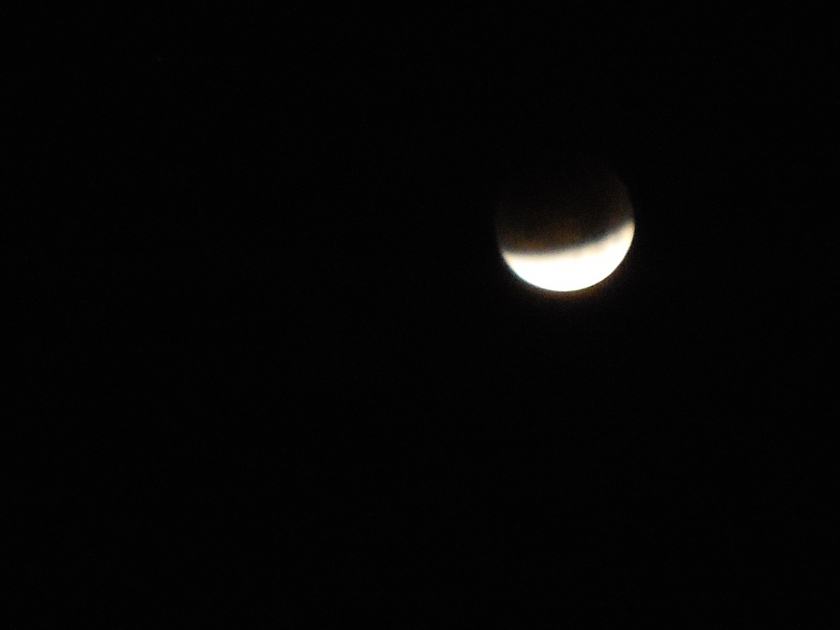
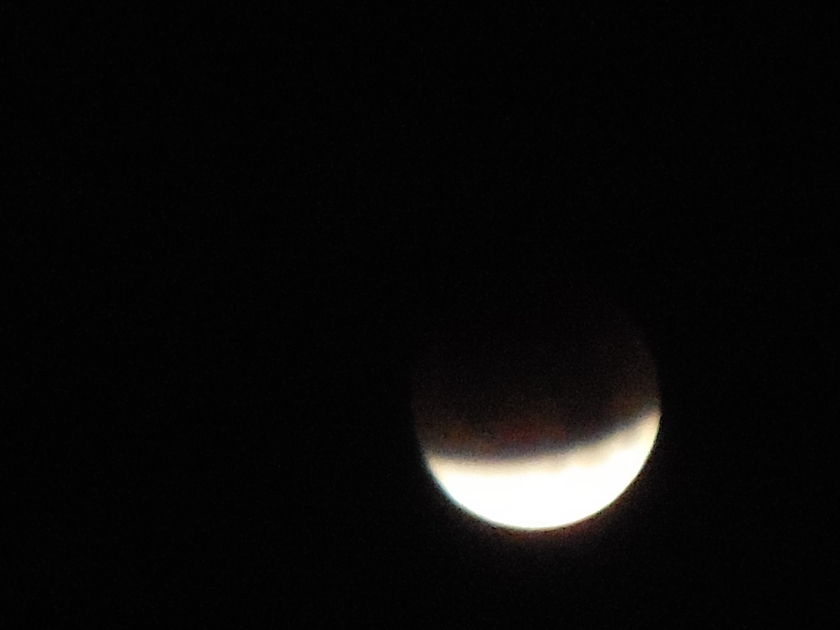
Both Photos above – 4:46 am – Woke up around 4:30 am and began taking photos w/ Nikon camera – first few shots – Moon entering the Earth’s shadow. (Nikon – S6800)

4:59 am – Above

5:02 am – Began to notice the Nikon was not picking up enough light. Image appeared very faint. At this point, I began to think about using an old telescope.

5:11 am – At this point, the Moon is passing into the Earth’s shadow. I decided to get the telescope out to see if I could gather more light!
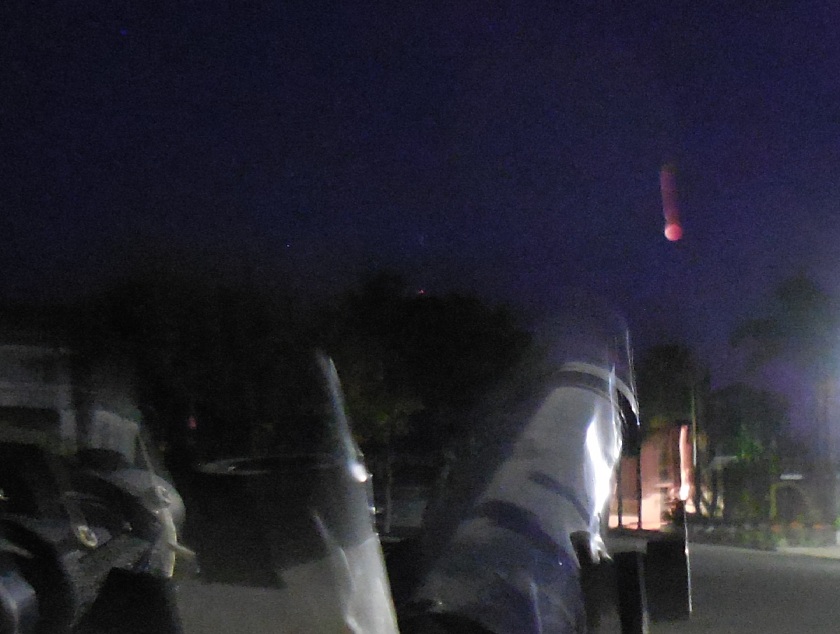
5:15 am – 5:30am – Using Meade refractor telescope. Set – up: focal length of main objective lens (700mm) and the focal length of the eye piece (25mm); so 700/25 = 28x – Using the Nikon w/ telescope. Below are the results…

Above – 5:31 am – Positioned the Nikon above the Meade’s eyepiece lens and this was the result. I was stoked.
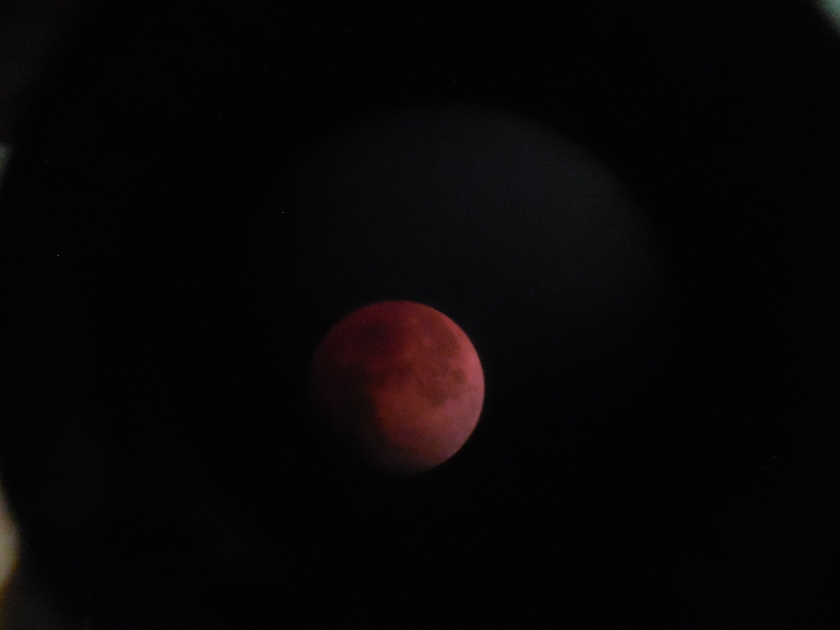
5:32am – Full Lunar Eclipse just after maximum at 5:29 am.
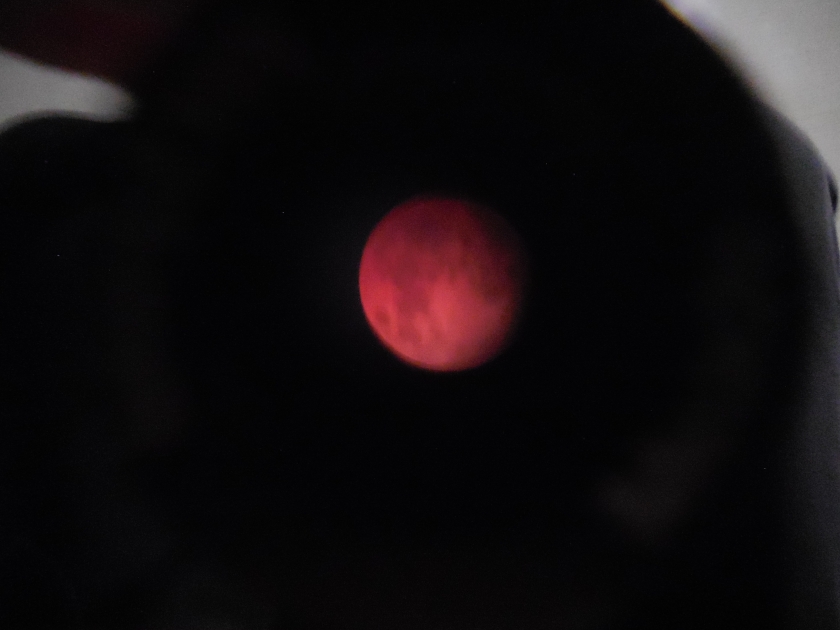
5:35 am – Full Lunar Eclipse (Outside edges are concrete driveway – under the telescope.)
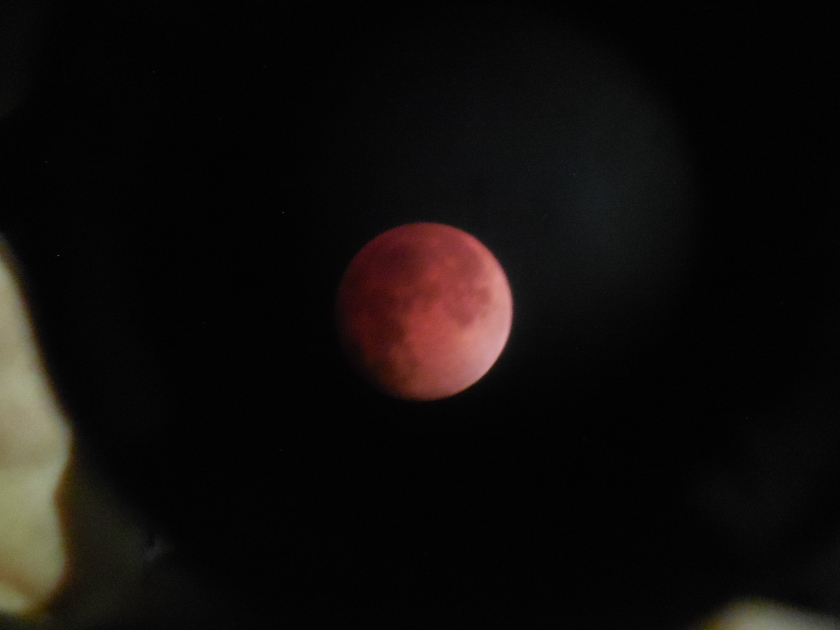
5:36 am – Full Lunar Eclipse
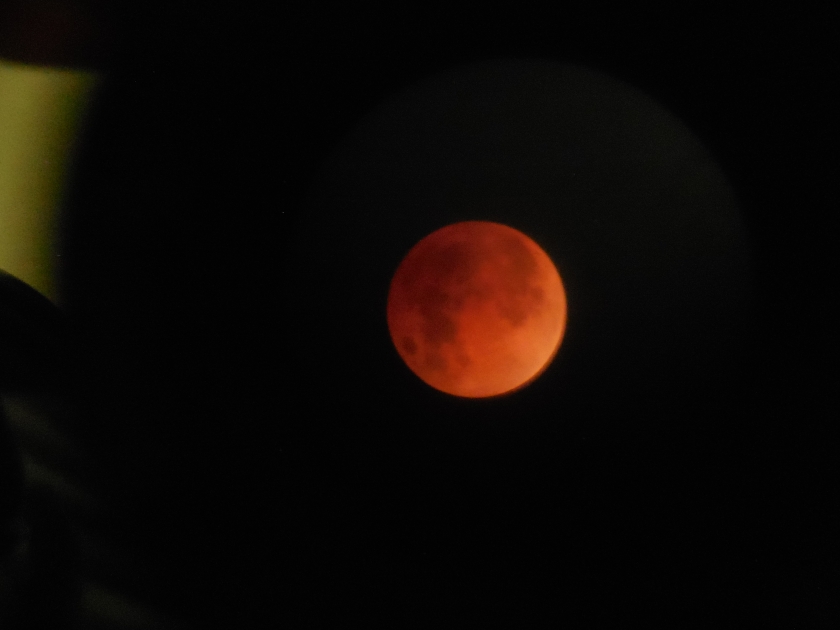
5:39 am – Full Lunar Eclipse
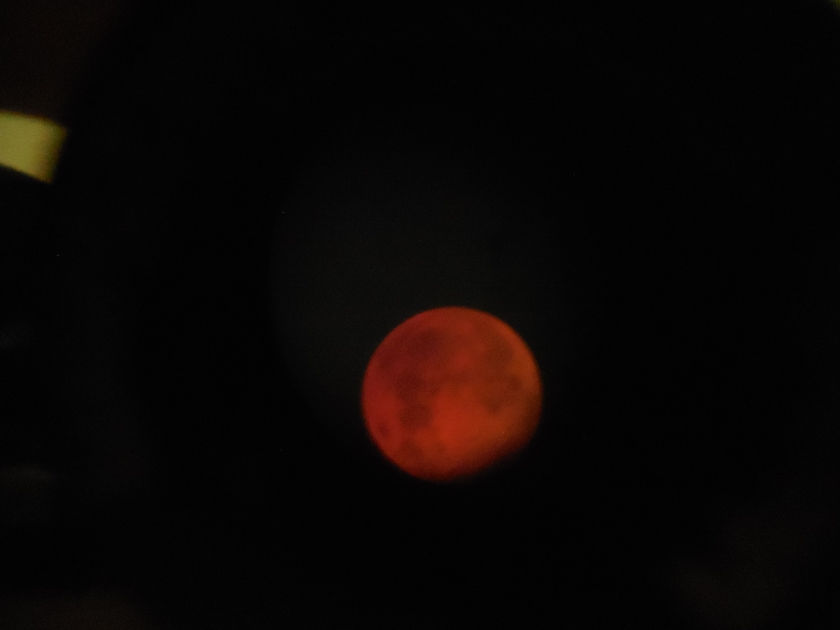
5:43 am – Full Lunar Eclipse
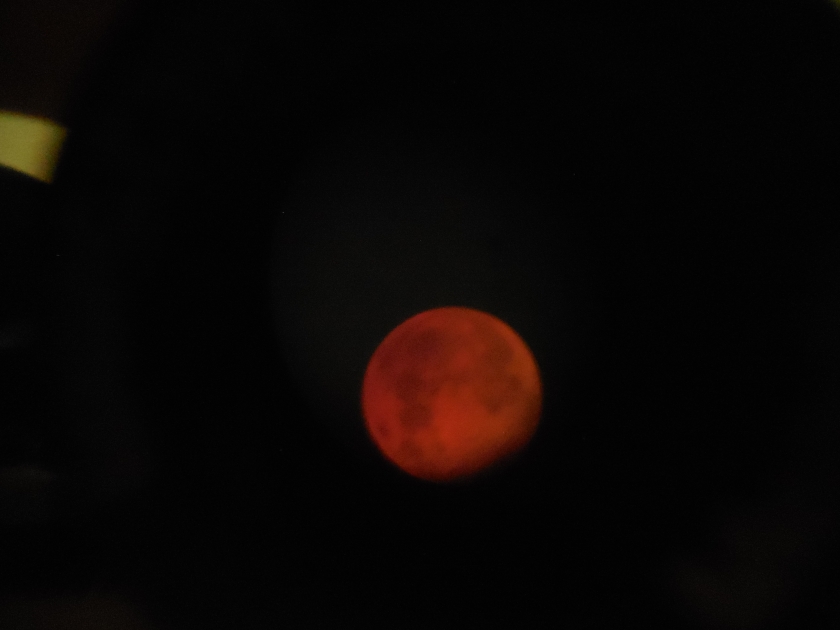
5:43 am – Full Lunar Eclipse
![DSCN0495[1]](https://digitaltidepoolblog.files.wordpress.com/2018/02/dscn04951.jpg?w=840)
6:14 am – Moon is coming out of the Earth’s shadow. (The blurry circle is the eyepiece lens of the telescope.)
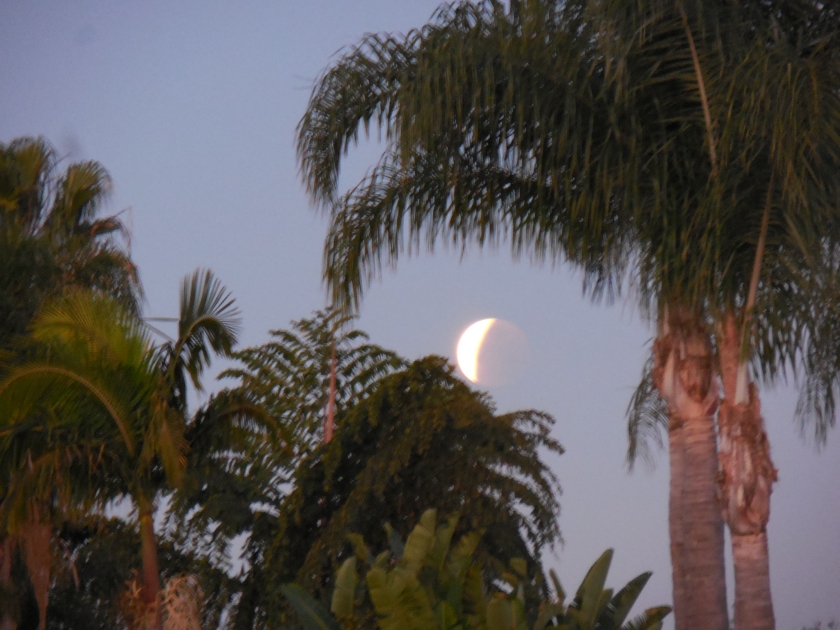
6:42 am – (Newport Beach, CA) – Note the moon is still within the penumbra (outer shadow which doesn’t receive as much red scattered light) – Nikon

6:57 am – Elementary school, Newport Beach, CA
![DSCN0501[1]](https://digitaltidepoolblog.files.wordpress.com/2018/02/dscn05011.jpg?w=840)
6:58 am – A closer look.. . Crown Dr.
![DSCN0502[1]](https://digitaltidepoolblog.files.wordpress.com/2018/02/dscn05021.jpg?w=840)
6:58 am
![DSCN0504[1]](https://digitaltidepoolblog.files.wordpress.com/2018/02/dscn05041.jpg?w=840)
6:59 am
![DSCN0505[1]](https://digitaltidepoolblog.files.wordpress.com/2018/02/dscn05051.jpg?w=840)
6:59 am – Last view of the eclipse. In reflecting back on this morning, I wish I had be more consistent about equipment and position. During future eclipses, I might find a place of higher elevation. Not to make excuses, but I was more focused on work this morning in setting up the classroom. This Spring, I will look into telescope/camera set-up options (no longer relying on sticking the camera over the lens and hoping for a clear image). As 80’s singer/songwriter Howard Jones philosophized— “Things can only get better.”
The following morning:
![DSCN0508[1]](https://digitaltidepoolblog.files.wordpress.com/2018/02/dscn05081.jpg?w=840)
7:20 am 2/1/18 – Following morning at an elementary school in Newport Beach, CA.
![DSCN0506[1]](https://digitaltidepoolblog.files.wordpress.com/2018/02/dscn05061.jpg?w=840)
7:19 am 2/1/18
UNDERSTANDING THE LUNAR ECLIPSE:
Why does the Moon appear red? The coloration is due to red light from the Sun being refracted around the Earth by the atmosphere; so during eclipse the Moon can appear red. Earth casts two shadows that fall on the moon during a lunar eclipse: The umbra is a full, dark shadow. The penumbra is a partial outer shadow. The moon passes through these shadows in stages. Perspective from the moon:
“If you were standing on the moon, looking back at the sun, you’d see the black disk of Earth blocking the entire sun, but you’d also see a ring of reflected light glowing around the edges of Earth — that’s the light that falls on the moon during a total lunar eclipse.”-www.skyandtelescope.com

Diagram/Image courtesy of – www.skyandtelescope.com (NOTE – Earth/Moon distance not to scale. The diagram is to show how light is bent into the umbra.)
What causes a lunar eclipse? A lunar eclipse occur only at full moon phase. Only at this phase is it possible for the moon to pass into the Earth’s shadow (umbra). Most of the time, the full moon misses the Earth’s shadow by orbiting below or above it. The diagram from Astronomy Stack does an excellent job showcasing the effect of the Moon’s orbital tilt of 5.1 degrees. For example, the last full moon on January 2, 2018 – orbit was south of the Earth’s Shadow (similar to the right side of the diagram) and the next full moon – on March 2, 2018 – will orbit north of the Earth’s shadow (similar to the left side of the diagram).
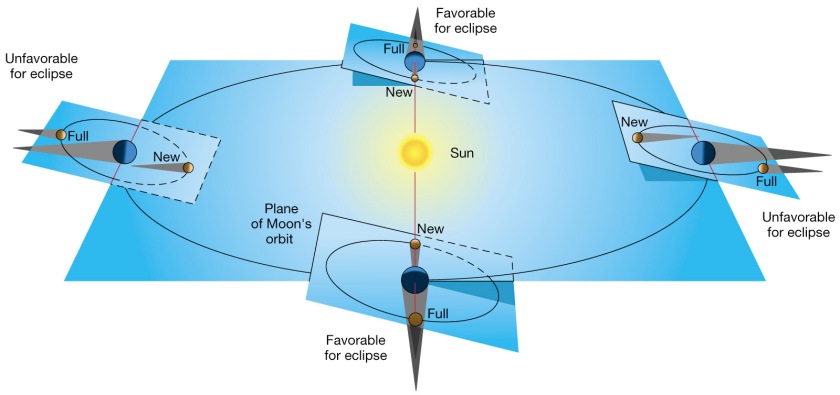 Diagram/Image courtesy of – Astronomy Stack Exchange – https://astronomy.stackexchange.com (NOTE: Earth’s orbit not to scale. Earth/Moon distance not to scale. Earth/Sun distance not to scale. The purpose of the diagram is to provide clarity to the 5.1 degree tilt of the moon’s orbit to the plane of the ecliptic.
Diagram/Image courtesy of – Astronomy Stack Exchange – https://astronomy.stackexchange.com (NOTE: Earth’s orbit not to scale. Earth/Moon distance not to scale. Earth/Sun distance not to scale. The purpose of the diagram is to provide clarity to the 5.1 degree tilt of the moon’s orbit to the plane of the ecliptic.
Why not a lunar eclipse each month? The moon’s orbital plane around Earth is inclined at 5 degrees (5.1) to the ecliptic – Earth’s orbital plane around the sun. However, the moon’s orbit intersects the ecliptic at two points called nodes (the red line passes through the nodes in the diagram above). It’s an ascending node where it crosses the Earth’s orbital plane going from south to north, and a descending node where it crosses the Earth’s orbital plane going from north to south. A lunar eclipse occurs when the full moon closely matches with one of its nodes.
For lunar eclipse points, see the diagram above (look at the middle two examples). On the middle top, the Moon’s orbit is aligned with the ascending node as it orbits counter-clockwise around the Earth. On the middle bottom, the Moon’s orbit is aligned with the descending node as it orbits counter-clockwise around the Earth. Earth-Sun-Moon line up = eclipse.
Every lunar eclipse is observable anywhere on Earth where the Moon is above the horizon (note->the sky has to be clear which it was this time…).
Terminology:
Moon in closest approach to Earth in a single orbit = Supermoon – Moon’s distance is less than 223,000 miles from Earth or 6% closer than the average Earth- Moon distance, which is 239,000 miles. (appears 30% brighter and 14% brighter)
More information on Supermoon – https://lightsinthedark.com/2016/11/11/whats-so-super-about-a-supermoon/
Moon passes into the Earth’s shadow = Lunar Eclipse
More information on Lunar Eclipses.: http://www.skyandtelescope.com/astronomy-news/observing-news/solar-and-lunar-eclipses-in-2018/



